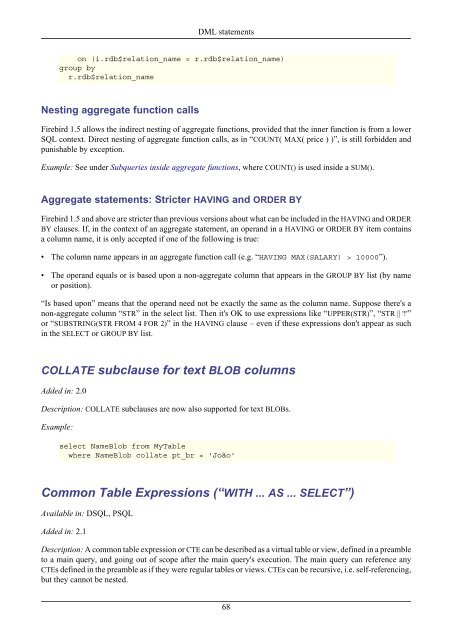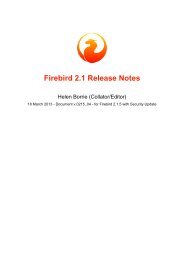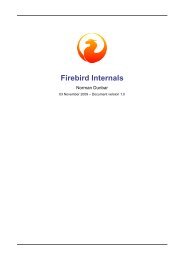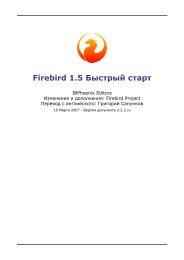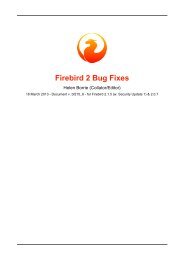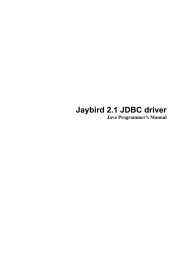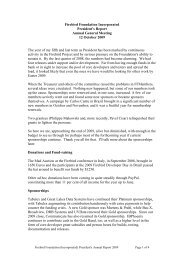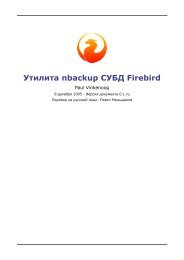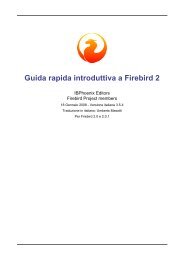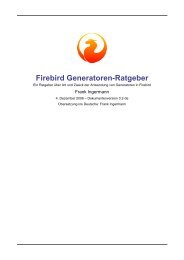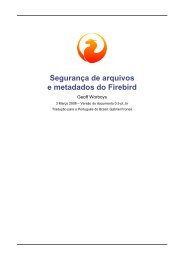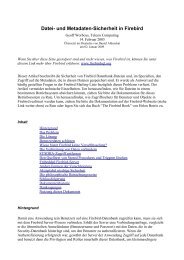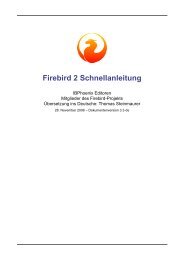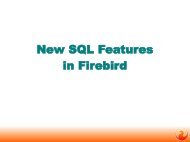Firebird 2.1 Language Reference Update
Firebird 2.1 Language Reference Update
Firebird 2.1 Language Reference Update
Create successful ePaper yourself
Turn your PDF publications into a flip-book with our unique Google optimized e-Paper software.
DML statements<br />
on (i.rdb$relation_name = r.rdb$relation_name)<br />
group by<br />
r.rdb$relation_name<br />
Nesting aggregate function calls<br />
<strong>Firebird</strong> 1.5 allows the indirect nesting of aggregate functions, provided that the inner function is from a lower<br />
SQL context. Direct nesting of aggregate function calls, as in “COUNT( MAX( price ) )”, is still forbidden and<br />
punishable by exception.<br />
Example: See under Subqueries inside aggregate functions, where COUNT() is used inside a SUM().<br />
Aggregate statements: Stricter HAVING and ORDER BY<br />
<strong>Firebird</strong> 1.5 and above are stricter than previous versions about what can be included in the HAVING and ORDER<br />
BY clauses. If, in the context of an aggregate statement, an operand in a HAVING or ORDER BY item contains<br />
a column name, it is only accepted if one of the following is true:<br />
• The column name appears in an aggregate function call (e.g. “HAVING MAX(SALARY) > 10000”).<br />
• The operand equals or is based upon a non-aggregate column that appears in the GROUP BY list (by name<br />
or position).<br />
“Is based upon” means that the operand need not be exactly the same as the column name. Suppose there's a<br />
non-aggregate column “STR” in the select list. Then it's OK to use expressions like “UPPER(STR)”, “STR || '!'”<br />
or “SUBSTRING(STR FROM 4 FOR 2)” in the HAVING clause – even if these expressions don't appear as such<br />
in the SELECT or GROUP BY list.<br />
COLLATE subclause for text BLOB columns<br />
Added in: 2.0<br />
Description: COLLATE subclauses are now also supported for text BLOBs.<br />
Example:<br />
select NameBlob from MyTable<br />
where NameBlob collate pt_br = 'João'<br />
Common Table Expressions (“WITH ... AS ... SELECT”)<br />
Available in: DSQL, PSQL<br />
Added in: <strong>2.1</strong><br />
Description: A common table expression or CTE can be described as a virtual table or view, defined in a preamble<br />
to a main query, and going out of scope after the main query's execution. The main query can reference any<br />
CTEs defined in the preamble as if they were regular tables or views. CTEs can be recursive, i.e. self-referencing,<br />
but they cannot be nested.<br />
68


